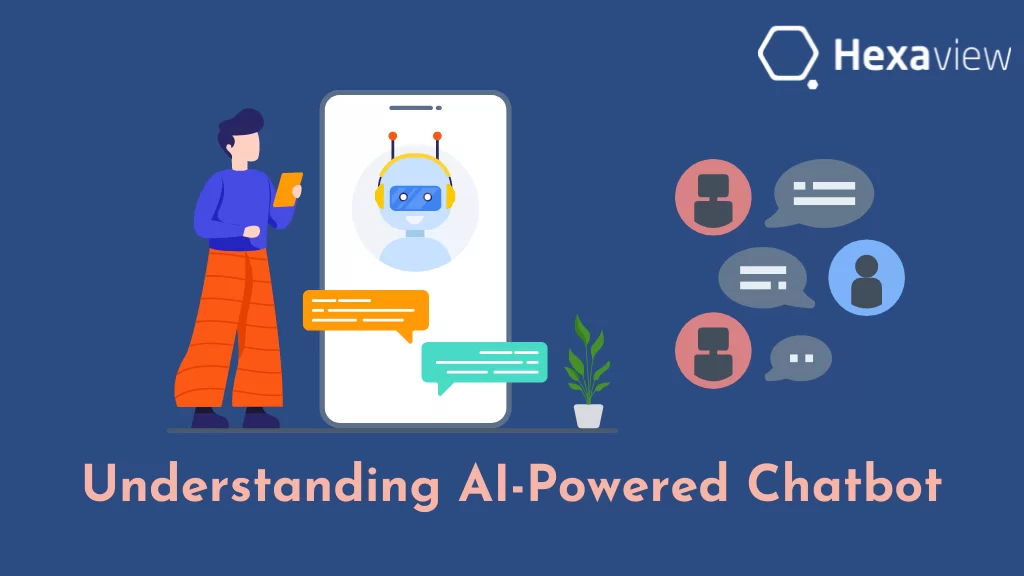Fintech
Binding seamless Technology with Finance



General Published on: Fri Feb 10 2023
A chatbot is a software application that imitates human-like conversations with end-users through text or voice messages on chat. Its core duty is to help users by delivering answers to their questions. Rather than having a conversation with a person like a customer support agent or a sales representative, a user can converse with a chatbot. Users could engage with chatbots at their preferred time, as they are available 24/7.
Applications of AI Chatbots in Business
AI chatbots are customizable and can be configured accordingly to meet a wide range of specific business needs. Some applications of chatbots are as follows:
1. Providing Customer Support. By interacting with an AI chatbot through an application, customers can perform several tasks which require only specifying some information, such as scheduling an appointment, requesting an account balance, tracking an order, and many more. There are many commonly raised queries, and the list of those FAQs could be fed to the bot. Customers can get their resolutions within seconds without waiting for their turn on a support call or searching over the internet for a minor issue. Chatbots could become a game-changer for both businesses and customers as it’s a win-win situation for both. Customers are delighted as their problems are resolved quickly, and business owners don’t need to spend money and labor to have 24*7 customer support.
2. Managing Calendars: One of the powerful abilities bots offer is executing repetitive tasks like scheduling meetings and back-and-forth messages. Bots could update all your scheduled meeting times in your calendar, which helps you save time, and it also provides automatic responses to emails if you are on leave or you already have a meeting scheduled at the time. Bots help users in preventing possible meeting clashes.
3. Customer Relationship Management (CRM): Nowadays, bots are built to manage the complex relationship of businesses with consumers. They can automatically store customer data and perform marketing efforts to drive new customers and retain customers’ feedback from existing users. Historically, managing customers’ information and capitalizing on it to drive revenue was a tedious and time-consuming task. Still, now businesses can leave all this work to a bot, and it will handle all of it, acting as a virtual marketing assistant.
Chatbot usage broadened during the COVID-19 pandemic as customer support services and onboarding gaps began to expand. During the pandemic, the chatbot market exceeded $17 billion, and according to reports, it is estimated to surpass $100 billion in the next five years.
During the pandemic, at the need of the hour, when only limited employees could work from an office, at that time chatbots came out as saviors by handling thousands of support requests single-handedly.
Another reason for the popularity of chatbots is that chatbot technology has improved its language skills. People in different parts of the world have varied ways of expressing themselves, making it difficult for chatbots to provide meaningful consumer encounters. Salesforce has consolidated natural language processing libraries to aid in testing new models that enable more accurate and inclusive dialogue between customers and chatbots, hence making chatbots a must-have software for businesses for the future.
At its most basic level, a chatbot is the front end of an API that has been pre-configured for a chatbot-style user interface. Creating a chatbot consists of only three steps which are as follows:
1. Choose a platform – First, you have to choose a platform to create an agent. Users can choose from various options, such as Google’s DialogFlow or Salesforce.
2. Generate the bot – After that, Generate the bot according to the platform’s guidelines. Users must set it up and build up user expressions that the bot can reply to and identify items in the expressions.
3. Train the bot. Experiment with the expressions to see if the objects behave as expected, and add intents and entities as necessary.
The initial stage in Salesforce Bot Builder is to create an intent model with a manager, including incorporating chatbot response pauses to mimic human interactions. As previously mentioned, the next stage is to activate the bot and prepare it for training. The bot can train on a large body of previous agent training data within the Einstein Bot process.
Salesforce offers Einstein Bots for Developers, which allows developers to undertake extensive custom code for highly complex bots. Users can connect the bot to a wide range of Salesforce products and processes to access customer profiles and historical data, activate workflows, and save data collected in the user exchange. From here, the bot has complete access to Einstein’s entire power.
Finally, Salesforce provides a dashboard for monitoring the bot’s performance after being deployed.
Conclusion: In this blog, you learned about AI-powered chatbots and how they help grow businesses by making them more customer-centric and advanced. With a chatbot, your company can effortlessly provide high-quality help and conflict resolution to many consumers at the same time, at any time of day. On the whole, AI-powered chatbots are the future of businesses, and if one wants their business to be ready for the future, then AI-powered chatbots are the one-stop destination for you.
You can reach out to a data science services company like Hexaview to develop an AI-powered Chatbot as per your requirements and needs.
If you are looking for an AI-Powered HR Chatbot that can automate your HR processes, you can look out for ALHexa, an AI-Powered HR Chatbot developed by Hexaview. It can also be utilized in several other processes like E-commerce, Transport and Logistic, Healthcare, Banking and Insurance, and others.
Get 30 Mins Free
Personalized Consultancy